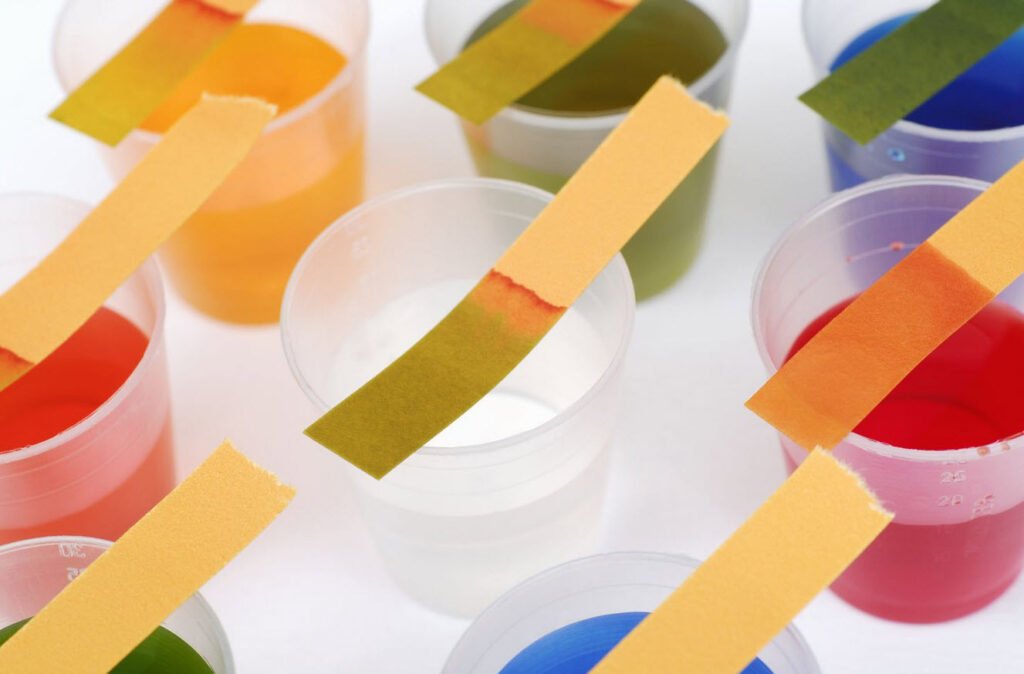
Litmus paper, a versatile pH indicator, is an invaluable tool for discerning the acidity or alkalinity of a substance. By harnessing the power of natural dyes derived from lichens, predominantly Roccella tinctoria, this unassuming paper becomes a gateway to understanding the chemical nature of solutions.
This article explores into the depths of litmus paper, unraveling its mysteries, and showcasing its two predominant forms: blue litmus paper and red litmus paper.
Understanding Acid-Base Indicators
The magic of litmus paper lies in the realm of acid-base indicators. These indicators are substances that undergo a captivating transformation, manifesting in a change of color in response to alterations in the hydrogen ion concentration, also known as pH, within a solution. Within the world of litmus paper, the game of colors reveals the underlying chemistry.
The Blue Litmus Paper
In its pristine state, blue litmus paper stands resplendent in its azure glory. However, when it encounters an acidic solution, a remarkable metamorphosis unfolds. The blue hue gives way to a vivid red. This enchanting color shift transpires due to the donation of hydrogen ions (H+) from the acidic solution to the litmus paper. This generous exchange leaves the blue dye protonated and transforms it into a passionate shade of red.
The Red Litmus Paper
True to its name, red litmus paper is born red. Yet, when it crosses paths with an alkaline (basic) solution, the paper displays its chameleon-like qualities. A captivating metamorphosis takes place as the alkaline solution accepts hydrogen ions from the litmus paper. This exchange leads to the red dye shedding its proton and embracing a brilliant shade of blue.
The Limitations of Litmus Paper
While litmus paper is an indispensable qualitative indicator, it’s essential to acknowledge its limitations. This humble paper provides a visual cue to determine whether a substance is acidic or alkaline, but it cannot offer precise pH measurements. For those seeking exact pH values, specialized instruments like pH meters or pH test strips are the tools of choice.
The Ubiquity of Litmus Paper
Litmus paper finds its utility across a spectrum of fields, including chemistry, biology, and medicine. It emerges as a cost-effective and convenient ally for quick and straightforward pH assessments. With its remarkable ability to signal the approximate pH of a solution based on observable color shifts, litmus paper continues to hold its significance in diverse applications.
Unveiling the Chemistry Within
In conclusion, litmus paper, with its vivid color transitions and simple yet effective methodology, reveals the hidden chemistry within various substances. Its blue and red variants serve as gateways to understanding the pH nature of solutions. While it may not provide precise pH measurements, its role as a qualitative indicator remains invaluable.
Whether in the laboratory or the medical field, litmus paper stands as a symbol of simplicity and reliability in the realm of pH testing.
You may also like:- Exploring the Enigmas of Science – Unraveling Celestial Mysteries and Physical Conundrums
- Semiconductor Related Terms – A Beginner’s Guide
- Major Trenches and Ridges Around the World
- [The Planets] Mercury to Neptune – Some Known Facts
- Unraveling Earth’s Mysteries – A Journey through Intriguing Questions
- The Principal Causes of Pollution – A Comprehensive Overview
- Thermal Pollution – Causes, Effects, and Solutions
- What is Noise Pollution?
- Why Are Bacteria and Microbes Afraid of UV Light?
- Soil Pollution – Causes, Effects, and Solutions







